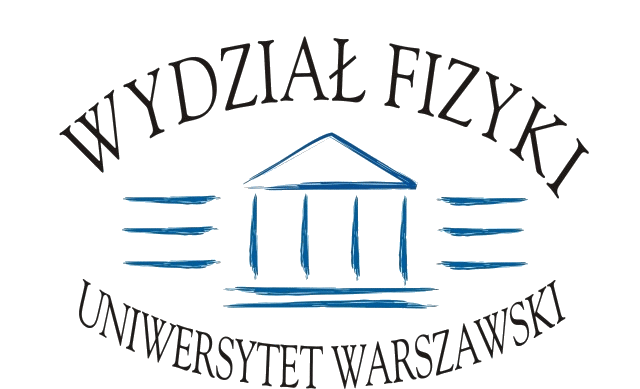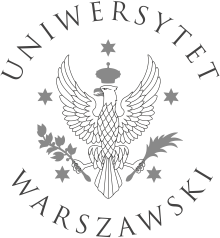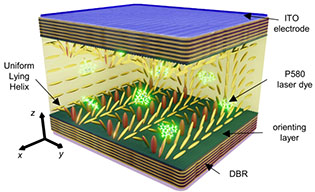New photonic platform developed by Polish research team
2025-06-25
A team of researchers from the Faculty of Physics at the University of Warsaw, the Military University of Technology, and the Institut Pascal at Université Clermont Auvergne has developed a novel method for using cholesteric liquid crystals in optical microcavities. The platform created by the researchers enables the formation and dynamic tuning of photonic crystals with integrated spin-orbit coupling (SOC) and controlled laser emission. The results of this groundbreaking research have been published in the renowned journal 'Laser & Photonics Reviews'.
“A uniform lying helix (ULH) structure of a cholesteric phase liquid crystal is arranged in the optical cavity. The self-organised helix structure with the axis lying in the plane of the cavity acts as a one-dimensional periodic photonic lattice. This is possible due to the unique properties of liquid crystals, which are elongated molecules that resemble a pencil,” explains Prof. Jacek Szczytko from the Faculty of Physics at the University of Warsaw, where research on novel optical microcavities is being conducted. “A cholesteric structure is a spiral structure made up of layers of almost parallel oriented molecules lying in a single plane. From layer to layer, the orientation of the molecules is gently twisted, which altogether builds up a helical structure reminiscent of DNA helixes or ‘piggyback’ noodles. The direction perpendicular to the layers of molecules determines the axis of the helix formed. It turns out that when such a structure is observed in the direction perpendicular to the axis of the helix under appropriate illumination, distinct stripes with a width equal to the helix pitch are noticed. The use of liquid crystals that respond to an electric field enables precise control of this pitch, and thus of the structure of the photonic bands, opening up new perspectives in photonic engineering,” adds Prof Szczytko.
The effects described are made possible by the use of optical microcavity, which restricts the movement of light in one dimension, giving it properties similar to particles endowed with mass. In the cavity, photons that have no rest mass start to behave like massive particles. Adding a photonic potential in space with a given period associated with a helix jump extends this analogy and allows further manipulation of these properties. “The goal of our research is to discover how light can acquire properties normally attributed to matter while retaining its unique characteristics. In our group, using liquid crystal optical microcavities fabricated in collaboration with a team from the Military University of Technology, we have been studying optical analogues of effects previously known from solid-state physics,” adds Prof Jacek Szczytko.
The optical microcavities were fabricated by researchers from the Military University of Technology, in Prof. Wiktor Piecek's group, using helical structures created by Prof Eva Oton in cavities fabricated by Dr Przemysław Morawiak and Dr Rafał Mazur. “The development of a suitable liquid crystalline mixture and conditions that allow the formation of a well-ordered homogeneous helix over a large area of an optical cavity is a complex challenge in materials engineering and liquid crystalline technology. 'Our team has many years of experience in controlling self-organised liquid crystal structures,” emphasises Prof Wiktor Piecek from WAT.
“For years, scientists have been developing nano- and microstructures that modulate the properties of the light that interacts with them. Photonic crystals - repeatable structures with periods comparable to the wavelength of light, which lead to the formation of band structures and band gaps that prevent photons possesing specific energies, similarly to what happens in the case of electrons in semiconductors - are of particular interest here,” explains Marcin Muszyński, first author of the paper and a doctoral student carrying out research at the Faculty of Physics of the University. “However, typical technologies for producing photonic crystals have several drawbacks: their manufacture is technologically complex and therefore expensive and time-consuming. The lattices themselves are limited in size, and the parameters of the fabricated structures, such as the period or “depth” of a trap once built, are difficult to change. Our work solves these problems - the structures created by self-organisation have a surface area in the order of hundreds of square micrometres, and thanks to the reorientation of the liquid crystal molecules in an electric field, we can dynamically control the band structure of the light trapped in the microcavity.
“The uniqueness of our system lies in the fact that it is formed by the self-organisation of liquid crystal molecules, and the medium itself retains the properties of a liquid. The application of an electric voltage allows us to observe in real time with a camera how the structure evolves, while maintaining a periodic order,” adds Marcin Muszyński.
“Liquid crystal molecules have the shape of an ellipsoid elongated in one direction. This characteristic feature leads to the formation of a large birefringence, which is crucial for the research being conducted. It allows light of different polarisations to interact differently with the lattice, creating independent energy bands. We observed that introducing a tilt of the molecules for the helix axis leads to an interaction between some of the energy subbands for the two lattices. We named this effect interband spin-orbit coupling (ISOC)," says Przemysław Oliwa, second author of the paper and a PhD student carrying out research at the UW Faculty of Physics. The interpretation and precise theoretical description of this effect was suggested by Prof Guillaume Malpuech and Prof Dmitry Solnyshkov, researchers from Institut Pascal, Université Clermont Auvergne, France, who collaborate with our team.
Based on our experience from previous work, we also introduced an organic dye into this liquid crystal periodic structure. This new system allowed us to observe lasing from two states with different energies, i.e. double lasing. Furthermore, due to the existence of a spin-orbit interaction between the bands in the periodic structure, we observed lasing in both linear and circular polarisation. “These latter results show that our research is both fundamental and applied,' adds Dr Piotr Kapuscinski from the Faculty of Physics at the UW, co-author of the paper.
“Our results open the door to applications in topological photonics and modern laser technologies. We show new possibilities for combining SOC effects with periodic photonic structures, and point to directions for further research into phenomena such as topological phase transitions, the Su-Schrieffer-Heeger model, or non-abelian feature fields,” Professor Jacek Szczytko concludes.
The research conducted by the UW scientists was co-financed by the National Science Centre and the “TopoLight” project, selected in the European Innovation Council (EIC) Future and Emerging Technologies (FET-Open) H2020 competition, coordinated by the UW Department of Physics.
Faculty of Physics of the University of Warsaw
Physics and astronomy at the University of Warsaw appeared in 1816 as part of the then Faculty of Philosophy. In 1825, the Astronomical Observatory was established. Currently, the Faculty of Physics at the University of Warsaw consists of the following institutes: Experimental Physics, Theoretical Physics, Geophysics, the Department of Mathematical Methods in Physics, and the Astronomical Observatory. The research covers almost all areas of modern physics on scales from quantum to cosmological. The Faculty's research and teaching staff consists of over 250 academic teachers. About 1,100 students and over 170 doctoral students study at the Faculty of Physics UW. The University of Warsaw is among the 300 best universities in the world, educating in the field of physics according to Shanghai’s Global Ranking of Academic Subjects.
SCIENTIFIC PUBLICATION:
Marcin Muszyński, Przemysław Oliwa, Pavel Kokhanchik, Piotr Kapuściński, Eva Oton, Rafał Mazur, Przemysław Morawiak, Wiktor Piecek, Przemysław Kula, Witold Bardyszewski, Barbara Piętka, Daniil Bobylev, Dmitry Solnyshkov, Guillaume Malpuech, Jacek Szczytko Electrically Tunable Spin-Orbit Coupled Photonic Lattice in a Liquid Crystal Microcavity, Laser Photonics Rev. 19(7)/2025)
DOI (cover): https://doi.org/10.1002/lpor.202570027
DOI: https://doi.org/10.1002/lpor.202400794
CONTACT:
Dr. hab. Jacek Szczytko, Prof. UW
Faculty of Physics, University of Warsaw
jacek.szczytko@fuw.edu.pl
Phone: +48 22 55 32 543
MSc Marcin Muszyński
Faculty of Physics, University of Warsaw
Phone: + 48 22 55 32 769
RELATED WEBSITES WWW:
https://www.fuw.edu.pl/faculty-of-physics-home.html
Website of the Faculty of Physics University of Warsaw
https://www.fuw.edu.pl/press-releases.html
Press service of the Faculty of Physics at the University of Warsaw
GRAPHIC MATERIALS:
FUW250625b_01
https://www.fuw.edu.pl/tl_files/press/images/2025/FUW250625b_01.jpg
The article was presented on the cover of the journal Laser & Photonics Reviews (fig. by Marcin Muszyński, Faculty of Physics, University of Warsaw). https://onlinelibrary.wiley.com/doi/10.1002/lpor.202400794
FUW250528b_fig02.jpg
https://www.fuw.edu.pl/tl_files/press/images/2025/FUW250625b_03.jpg
Tunable photonic crystal based on a self-organising liquid crystal structure in an optical microcavity (Fig. Marcin Muszyński, Faculty of Physics, University of Warsaw).






